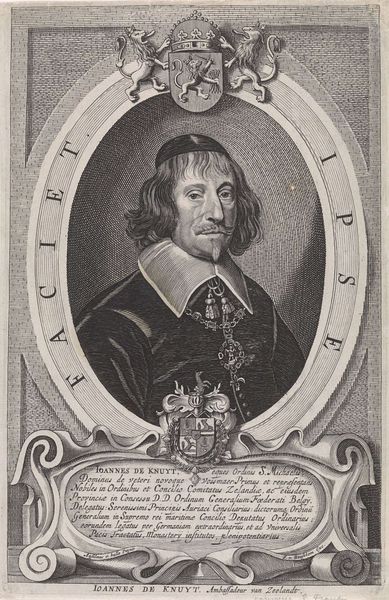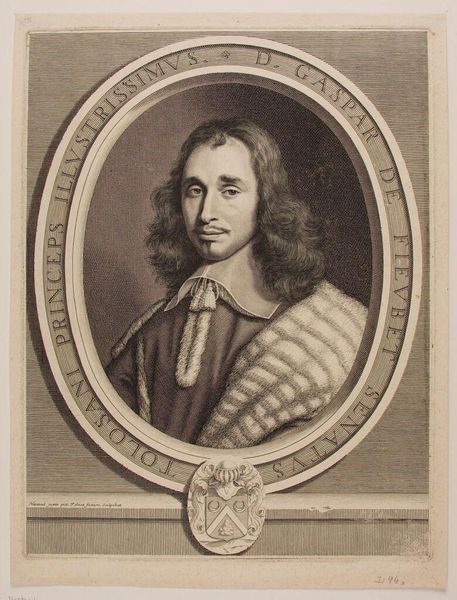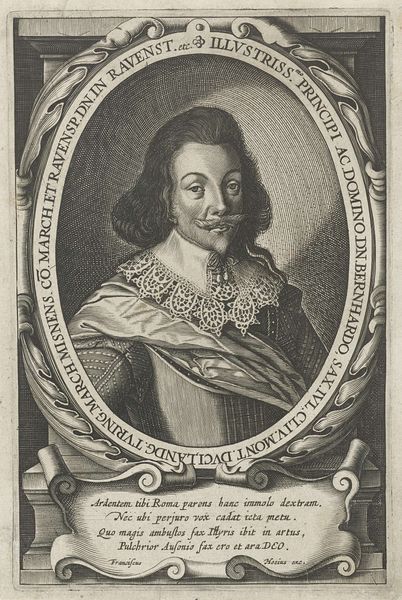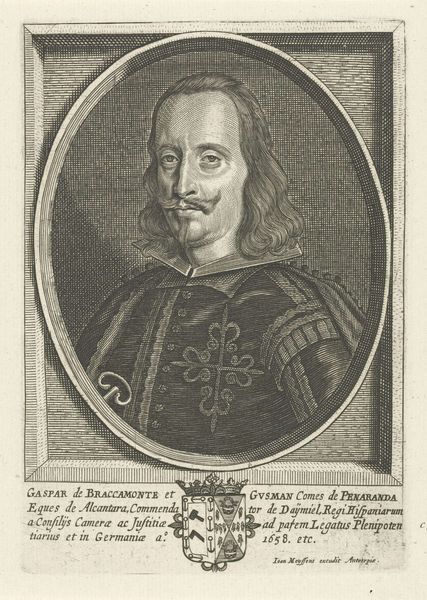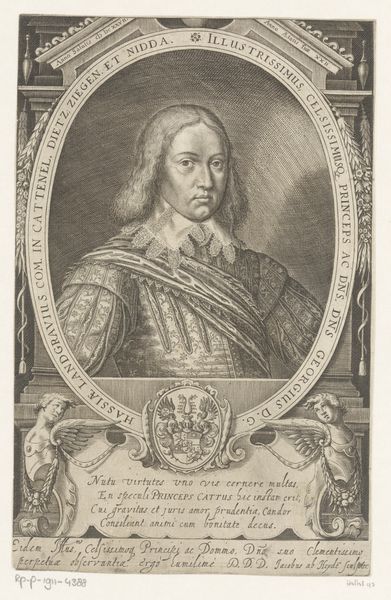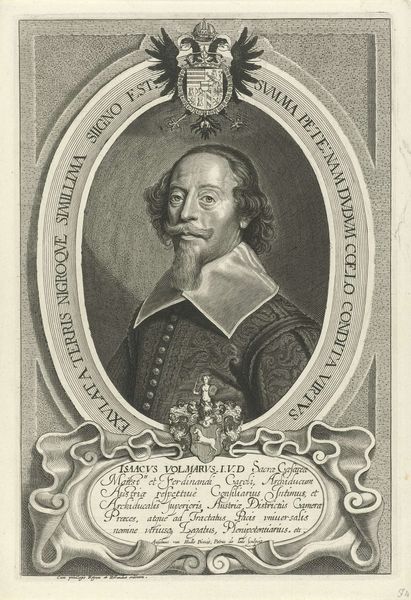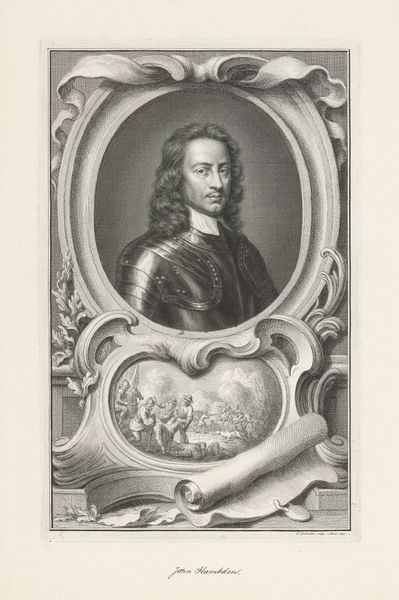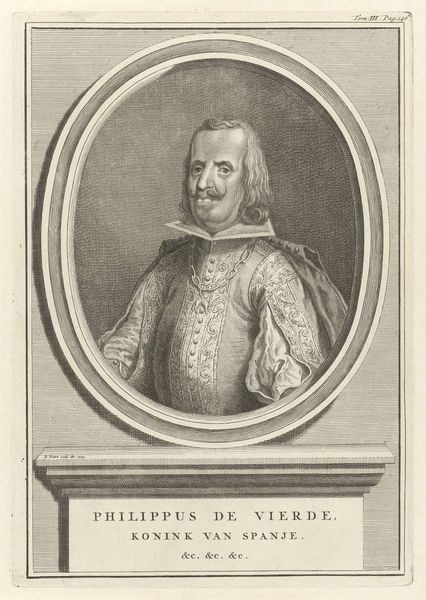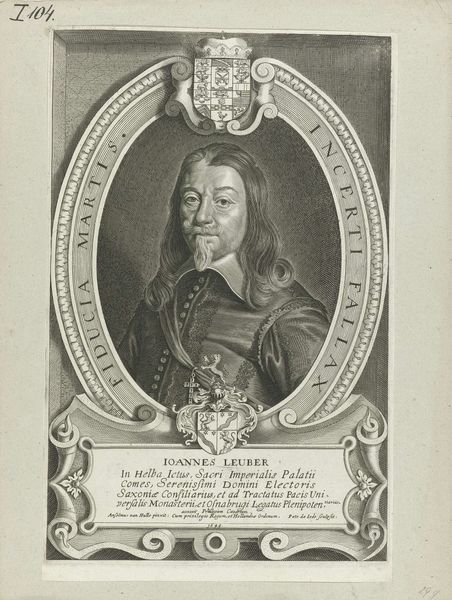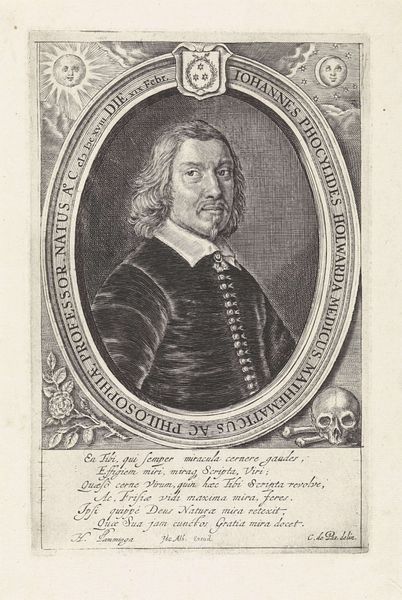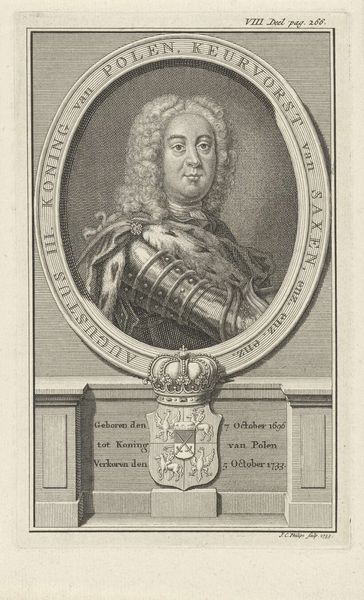
print, engraving
#
portrait
#
baroque
# print
#
old engraving style
#
history-painting
#
engraving
Dimensions: height 308 mm, width 200 mm
Copyright: Rijks Museum: Open Domain
This portrait of Cornelius Gobelius was made by Pieter de Jode the Younger, likely around the mid-17th century, using engraving. Consider how the sharp lines and meticulous detail were achieved. The engraver would have used a tool called a burin to carve lines directly into a metal plate, a process demanding immense skill and control. Ink is then forced into these lines, and the plate is pressed onto paper, transferring the image. Look closely, and you can almost feel the incised lines under your fingertips. Engraving like this was not just a means of reproduction; it was a highly valued craft in its own right. Think of the labor involved in producing such a detailed image, and the social status that came with commissioning it. It underscores the connections between artistic production, social class, and the circulation of images in the early modern period. The choice of engraving speaks to the desire for permanence and dissemination, aligning the portrait with the sitter's own ambitions and legacy. Ultimately, appreciating the material and process of this engraving allows us to see it not just as a picture, but as an index of skill, labor, and social ambition.
Comments
No comments
Be the first to comment and join the conversation on the ultimate creative platform.
